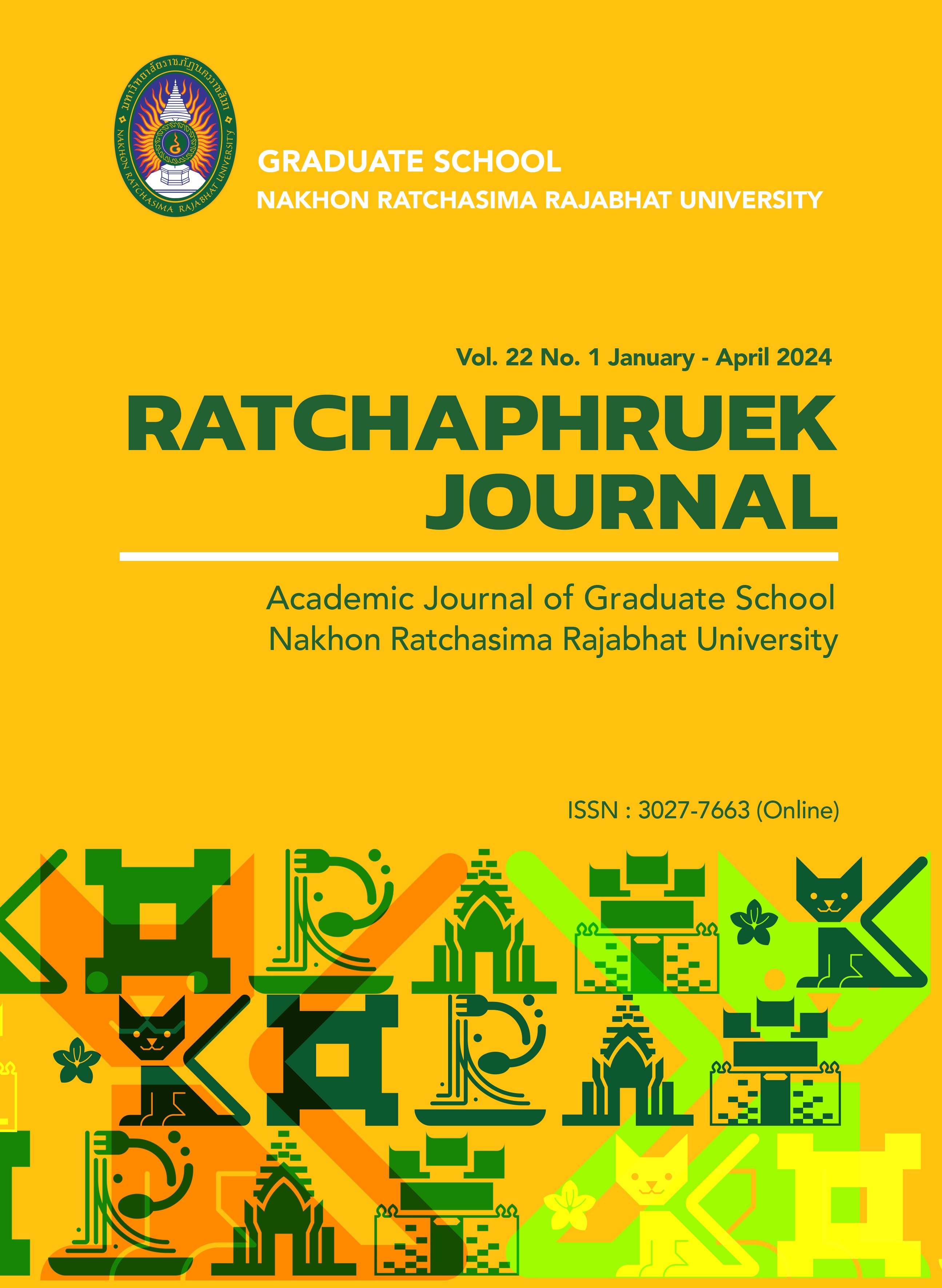Digital Intelligence of Undergraduate Students
Main Article Content
Abstract
This research aimed to measure the digital intelligence of undergraduate students and compare it based on their gender, major, and Grade Point Average (GPA). Sample were 402 undergraduate students from autonomous universities in all four regions of the country using the Two-Stage Random Sampling method. The research instruments included digital intelligence tests for under-graduates, and the data was analyzed by frequency, percentage, mean (M), and standard deviation (S.D.). Differences were compared using a t-test along with a one-way ANOVA test.
The findings indicate that overall, undergraduate students have good levels of digital intelligence. When examining specific aspects, it was observed that: 1) Digital Safety is at a good level, 2) Digital Emotion is good, 3) Digital Awareness and Participation are at a good level, and 4) Digital Literacy is at a very good level. When comparing digital intelligence based on gender, major, and Grade Point Average (GPA), no statistically significant differences were found at the .05 significance level.
Article Details

This work is licensed under a Creative Commons Attribution-NonCommercial-NoDerivatives 4.0 International License.
References
กระทรวงเทคโนโลยีสารสนเทศและการสื่อสาร. (2559). แผนพัฒนาดิจิทัลเพื่อเศรษฐกิจและสังคม. สืบค้นเมื่อ 20 มีนาคม 2563, จาก https://www.mdes.go.th/content/download-detail/2798
กระทรวงดิจิทัลเพื่อเศรษฐกิจและสังคม. (2563). แผนยุทธศาสตร์ พ.ศ. 2563-2567. สืบค้นเมื่อ 20 มีนาคม 2563, จาก https://www.mdes.go.th/law/download/502
กระทรวงอุดมศึกษา วิทยาศาสตร์ วิจัย และนวัตกรรม. (2561). สถิติอุดมศึกษา ปี 2561. กรุงเทพฯ: ซีโนพับลิชชิ่ง แอนด์แพคเกจจิ้ง.
คณะกรรมการการอุดมศึกษา. (2561). กรอบมาตรฐานคุณวุฒิด้านดิจิทัลระดับปริญญาบัณฑิต. สืบค้นเมื่อ 12 กันยายน 2561, จาก http://edu.vru.ac.th/
ชูศรี วงศ์รัตนะ. (2550). เทคนิคการใช้สถิติเพื่อการวิจัย. นนทบุรี: ไทยเนรมิตกิจ อินเตอร์ โปรเกรสซิฟ.
ธาม เชื้อสถาปนศิริ. (2557). สื่อดิจิทัลกับเด็กไทย ประเด็นที่ควรกังวลและรับมือ. สืบค้นเมื่อ 25 กันยายน 2563, จาก https://nbtcrights.com
พนม คลี่ฉายา. (2559). การใช้งาน ความเสี่ยง การรู้เท่าทันสื่อดิจิทัล และแนวทางการสอนเพื่อการรู้เท่าทันสื่อดิจิทัล (รายงานผลการวิจัย). กรุงเทพฯ: สำนักงานกองทุนสนับสนุนการวิจัย (สกว.).
วรรณกร พรประเสริฐ และรักษิต สุทธิพงษ์. (2562). ความเป็นพลเมืองดิจิทัลของนิสิตนักศึกษา ในสถาบันอุดมศึกษาของรัฐ. วารสารศึกษาศาสตร์ มหาวิทยาลัยทักษิณ, 19(2), น. 104-117.
วรรณี แกมเกตุ. (2555). วิธีวิทยาการวิจัยทางพฤติกรรมศาสตร์ (พิมพ์ครั้งที่ 3). กรุงเทพฯ: โรงพิมพ์แห่งจุฬาลงกรณ์มหาวิทยาลัย.
แววตา เตชาทวีวรรณ และอัจศรา ประเสริฐสิน. (2559). การพัฒนาแบบวัดการรูดิจิทัลสำหรับนักศึกษาระดับปริญญาตรี (รายงานผลการวิจัย). กรุงเทพฯ: มหาวิทยาลัยศรีนครินทรวิโรฒ.
สรานนท์ อินทนนท์. (2562). ทักษะการเอาใจเขามาใส่ใจเราทางดิจิทัล (Digital Empathy). ปทุมธานี: วอล์ค ออน คลาวด์.
สำนักงานคณะกรรมการดิจิทัลเพื่อเศรษฐกิจและสังคม. (2562). กรอบการเข้าใจดิจิทัลสำหรับพลเมืองไทย สืบค้นเมื่อ 17 มกราคม 2563, จาก https://www.onde.go.th
DQ Institute. (2017). Digital Intelligence: A Conceptual Framework. Retrieved August 31, 2017, from https://www.dqinstitute.org
European Commission. (2017). DigComp2.1 The Digital Competence Framework for Citizens. European Union: Luxembourg Publications.
Park, Y. (2016). 8 digital life skills all children need-and a plan for teaching them. Retrieved September 6, 2016, from https://www.weforum.org.
UNESCO. (2019). Digital in Asia-Pacific Insights into Children's Digital Citizenship. Retrieved September 3, 2019, from https://www.gcedclearinghouse.org.


